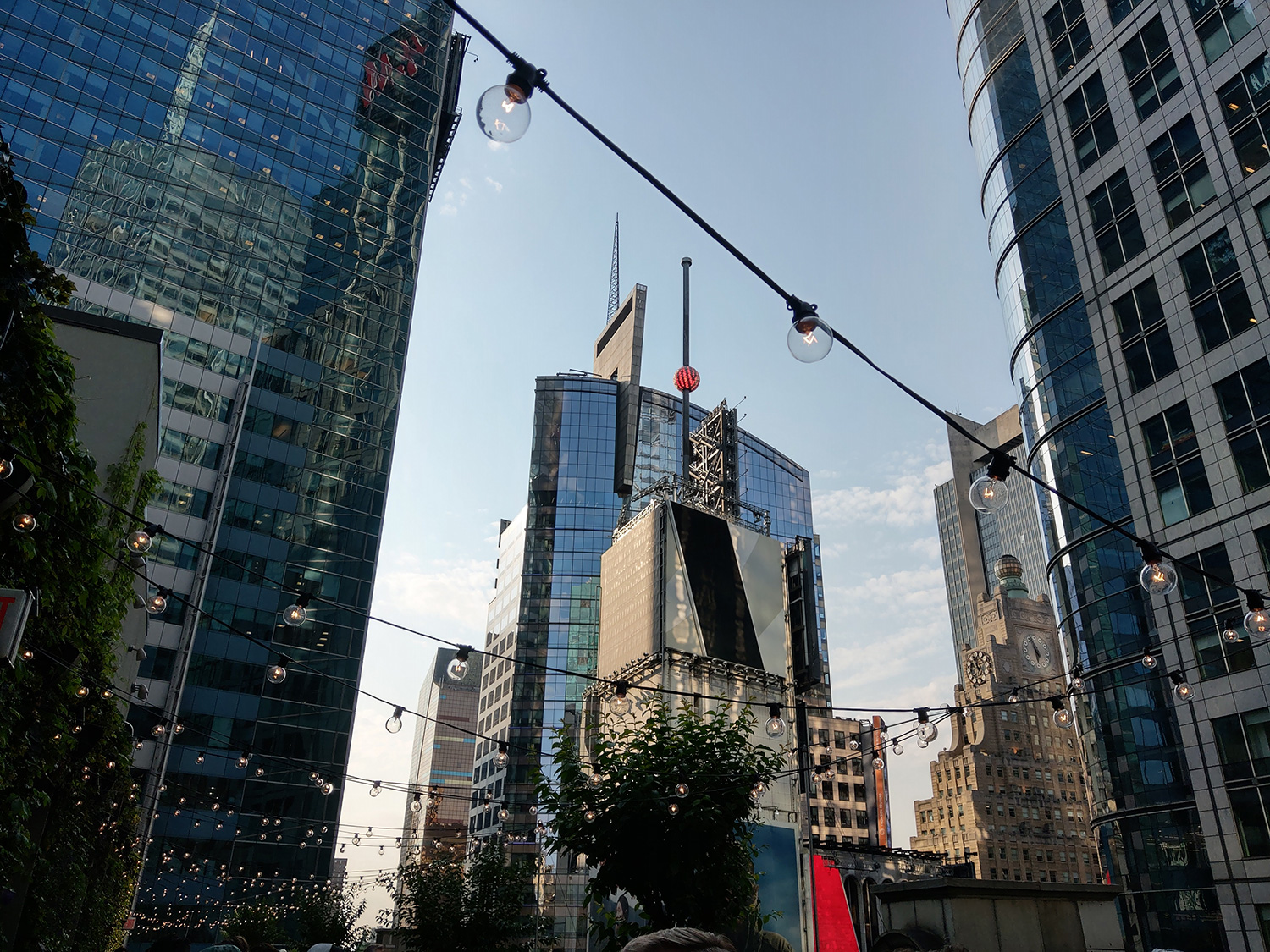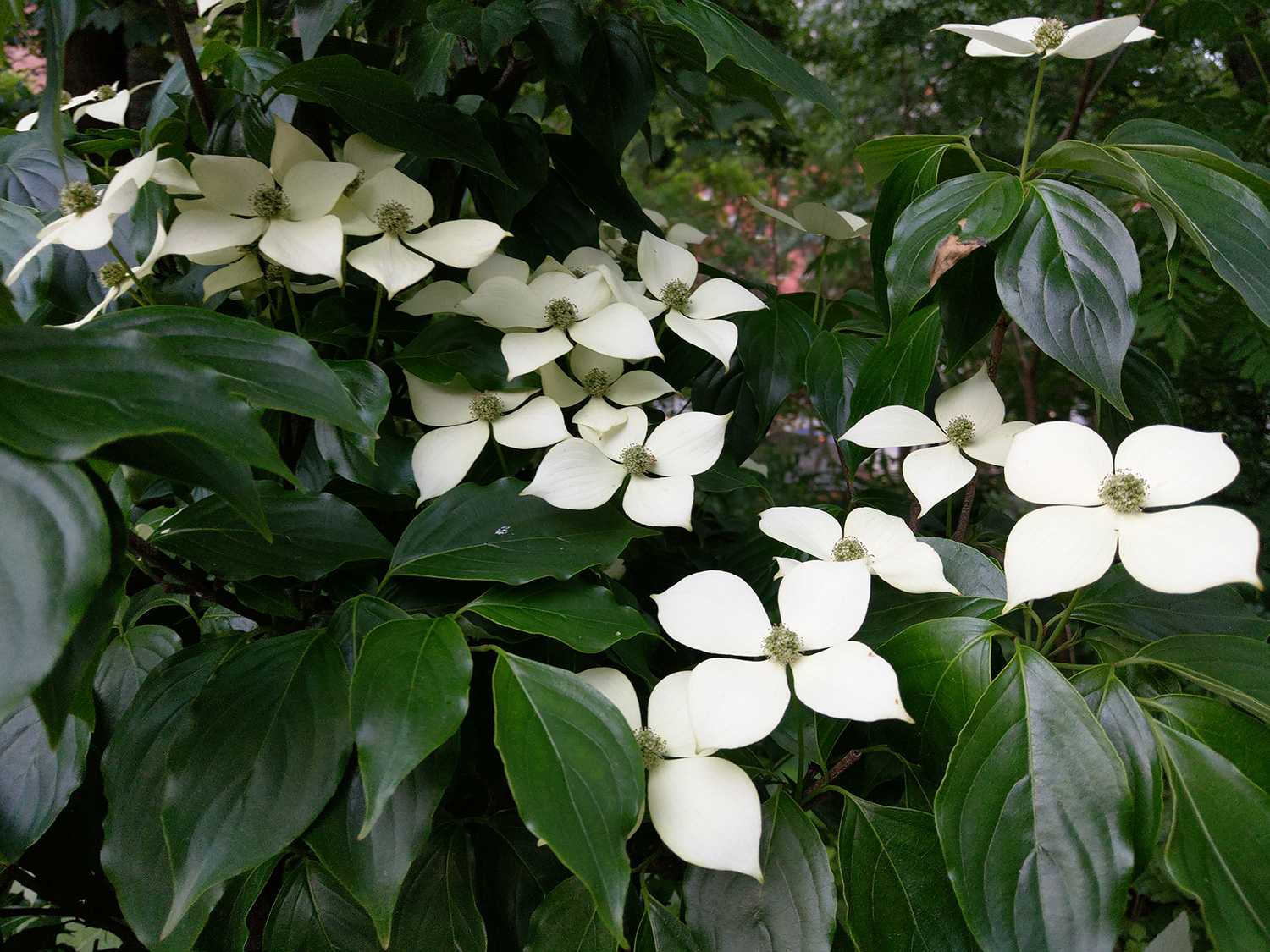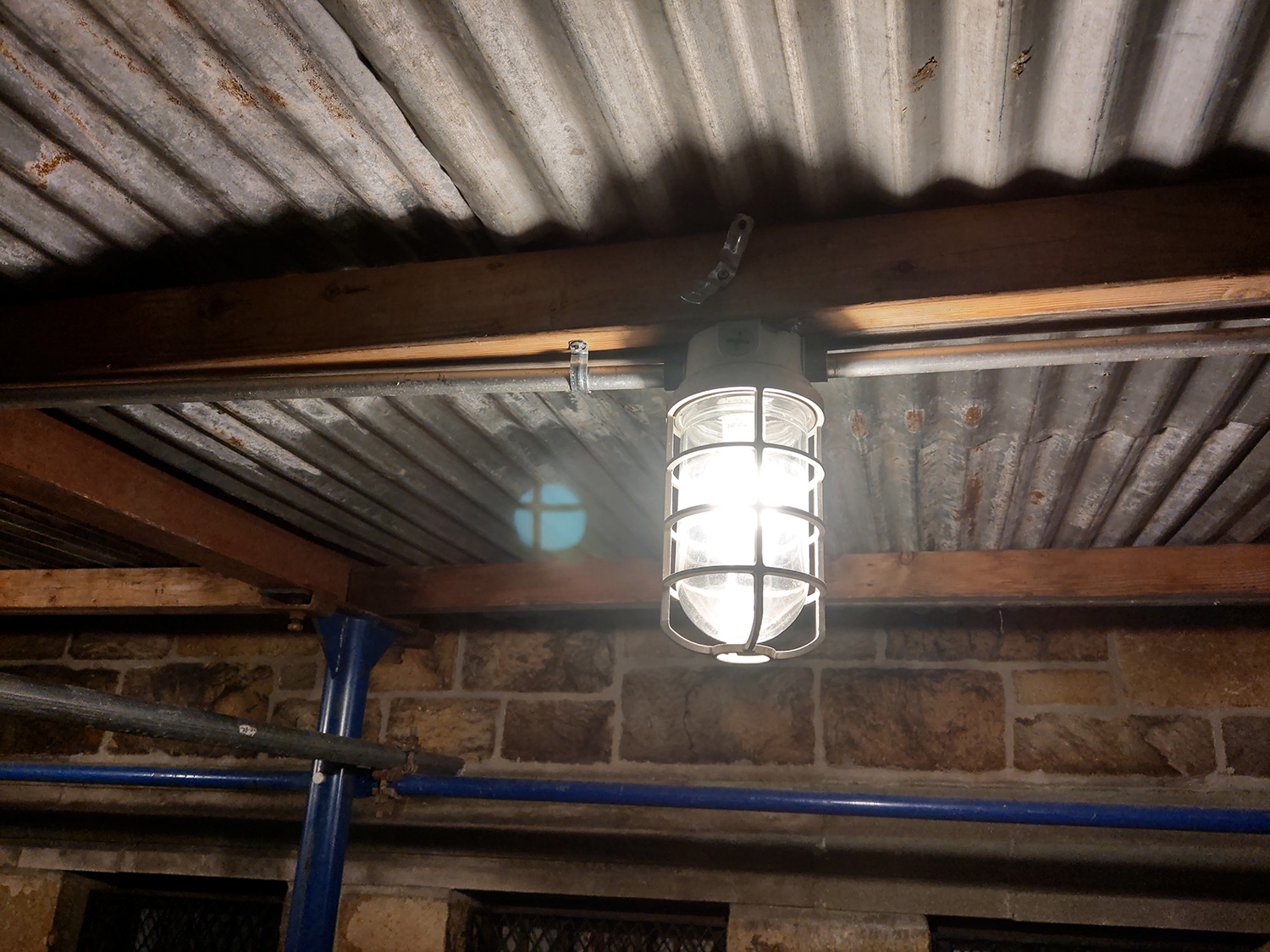“Frustrating digital buttons and dull software throw an otherwise attractive phone under the bus.”
- Excellent performance
- Daylong battery life
- Strong camera
- Great sound
- Overly sensitive digital buttons
- Sense UI is dull, lots of bloatware
- Display has poor viewing angles
Physical buttons are good, because they’re reliable. Touch-sensitive or “digital” buttons — like the one on the iPhone 7 and iPhone 8 — can work, when sparingly used. But the new HTC U12 Plus smartphone goes all in on touch, and it leaves behind a frustrating user experience.
It’s aggravating because the U12 Plus, a successor to last year’s well-received HTC U11, is a good phone. It has excellent performance, day-long battery life, and a strong camera. But you shouldn’t have to deal with visual interruptions throughout your smartphone experience because of digital buttons. For $800, it’s unreasonable. Let’s take a closer look.
Update: We encountered a few bugs on the pre-production unit we reviewed. We received a final production model, and the bugs were not present, so we removed them from this review. We also bumped the score from 2.5 to 3 out of 5 stars, but we’re still waiting for a fix for the digital buttons.
Hefty, but comfortable
The HTC U12 Plus is big and chunky, but that’s not a bad thing. The glass back and front edges blend into the metal frame, which makes the phone feel comfortable to hold, and the weightiness accents the U12’s brick-like build and quality craftsmanship.
The back of our review model is blue, but also translucent like the back of a Swiss watch. Here there’s not much to see, though it still gives off a cool look. Some random lines on the bottom part of the phone’s rear (perhaps under the glass) detract from the translucency in the middle; the phone would look a lot sleeker without them, because it currently looks a bit cluttered.
A horizontal module on the back houses two cameras, with a flash and easy-to-access fingerprint sensor below. HTC’s still employing its Liquid Surface design, which means there are variations of color within the layers of glass, providing subtle changes in hue when you shine the phone in light. This technique is more apparent on the Flame Red and Ceramic Black color options, but the Translucent Blue model is eye-catching and looks great too.
The weightiness accents the U12’s brick-like build and quality craftsmanship.
The front and back of the phone are protected with Gorilla Glass 3, which HTC said “strikes the right balance of shatter resistance, scratch resistance, and bendability at extreme angles.” We’ve already noticed a small scratch on the rear, without ever dropping the phone, so perhaps the newer Gorilla Glass 5 would have been a better option. Scratches and cracks are inevitable — considering it’s still glass — so you’ll want to make sure you get a case to protect this phone.
Over on the front, HTC is finally embracing the bezel-less trend, where the edges surrounding the screen are slimmed down. The bezels are still chunky when compared to the U12’s contemporaries like the Samsung Galaxy S9, LG G7 ThinQ, and OnePlus 6, but it’s a big improvement over the dated look of the HTC U11. What sticks out on the front are the two front-facing cameras, which we’ll get to later.
The 6-inch Super LCD screen has an 18:9 aspect ratio and a 2,880 x 1,440 pixel resolution, with a pixel density of 537 pixels-per-inch. It looks plenty colorful and sharp, though we wish it got brighter — it’s a little tough to see outdoors in direct sunlight. Blacks aren’t as inky as you’d find on an OLED screen, but they don’t look bad here at all. The viewing angles on the U12 Plus, however, aren’t great; the screen looks a lot darker when viewed from the side, which can be a problem when sharing the screen with someone.
A USB Type-C charging port sits on the bottom with a speaker grill next to it. You’ll be plenty happy with the sound that comes out of the stereo speakers (the top earpiece works as a second speaker), thanks to HTC’s BoomSound technology. It might not replace your Bluetooth speaker, but music and videos sound vibrant and dynamic, and the audio gets incredibly loud — just make sure you toggle between the Music and Theater mode in the notifications to get the best sound possible.
Considering there’s quite a bit of bezel on the bottom of the screen, it’d be nice if HTC added the second speaker here instead of on the bottom edge, as we often found ourselves covering it with our hand in landscape mode. There’s no headphone jack, but HTC does provide USB Type-C earbuds in the box.
Digital buttons and Edge Sense
That brings us to the buttons on the phone. They’re all on the right edge — a volume rocker is at the top, and below it is a textured power button. But they’re not really buttons. Think of them as parts of the phone that stick out, because you can’t push them in like normal mechanical buttons. Instead, they’re touch-sensitive, so you’re applying pressure to the button to make it work. The haptic response you get from pressing these digital buttons is strong, but not overbearing.
Sadly, in almost every single hour of use, you will accidentally trigger one of these buttons. After using the phone for around two weeks, we’ve gotten used to these interruptions, but we haven’t been able to stop them from happening. Simply by holding the phone in a natural way, the screen turns off from too much pressure on the power button. Or randomly shifts into Do Not Disturb mode from pressure on the volume down button.
HTC seriously needs to go back to the drawing board and pay more attention to user experience.
Worse yet, we’ve encountered the volume up button not working at all one time. We restarted the phone and got it working again, and we haven’t been able to replicate the problem yet. The fact it happened once is worrying.
Digital buttons also make holding the phone in your hand when walking — or putting your hand in the same pocket as your phone — frustrating. A lot of vibrations go off because the phone thinks you’re trying to interact with it. Next thing you know, you’ve taken five photos because you accidentally double pressed the power button and launched the camera (a shortcut that’s also not as reliable as a double press on mechanical buttons).
So why did HTC go for these aggravating not-real buttons? There have been rumors of the company toying with the idea of a button-less phone for some time, and the U12 Plus is just a step towards that goal. When asked, HTC told Digital Trends the buttons were digital to help improve water resistance — though the phone has the same IP68 rating as phones with mechanical buttons like the Galaxy S9.
The plus side is that HTC is aware of these sensitivity issues, and the problem will likely be tackled in a software update. We’ll keep an eye out on one to see if it improves the U12 Plus’ experience, but we still think mechanical buttons will trump digital ones.
Edge Sense is yet another way to touch the U12 Plus to trigger an action. It’s a feature enabled by sensors on the sides of the phone. Basically, you can squeeze the phone to launch an app or shortcut. You can also perform a long squeeze for another shortcut, and HTC has added a third option with the U12 Plus — double tap a side of the phone. The default action activates one-handed mode, though it can be changed.
Unlike the digital buttons, there are various sensitivity levels for Edge Sense. We’ve never encountered an accidental trigger here, but there are blue indicators that pop up along the bottom half of the screen to alert you about pressure applied on the sensors. The problem is that they pop up all the time when just holding the phone, and they’re distracting. It’s impossible to read an article without seeing blue circles all over the bottom half of the screen. The good thing is there’s an option to hide the visual interruptions in Edge Sense settings.
HTC’s Edge Sense sensors are also supposed to detect the way you hold the phone to prevent unwanted screen rotation when you lie down. It sounds good in theory, but like the rest of these features, in practice it’s more annoying than helpful. We usually don’t change our hand placement much when we switch to landscape mode to watch a video or look at a photo, which means the U12 Plus thinks we don’t want to switch to landscape mode. This feature forces us to change the way we hold the phone just to appease Edge Sense. Thankfully, you can turn this off.
Edge Sense, and digital buttons have potential, but HTC seriously needs to go back to the drawing board and pay more attention to user experience.
Great performance
The HTC U12 Plus is powered by Qualcomm’s Snapdragon 845 processor, and it comes with 6GB of RAM. It’s the same amount of power you’ll find in other flagship phones, and the U12 Plus doesn’t disappoint with performance. Apps open quickly, scrolling feels fluid, and games like PubG: Mobile run without a hitch.
Here are a few benchmark results:
- AnTuTu 3DBench: 250,938
- Geekbench 4 (CPU): 2,406 single-core; 8,787 multi-core
- 3DMark Sling Shot Extreme (Vulkan): 2,776
The U12 Plus’ AnTuTu score sits right below the likes of the Galaxy S9 and OnePlus 6, which is par for the course. This phone can handle anything and everything you throw at it, and it doesn’t get hot after long periods of use.
Abundant bloatware, Android 8.0 Oreo
Sense UI is HTC’s software layered over Android 8.0 Oreo on the U12 Plus, and it’s not our favorite user interface. There are some customization options, but not as many as we’d like, and Sense UI overall feels a little sluggish likely due to slow animations.
We never found software additions from HTC, such as BlinkFeed (a news aggregator built into the home screen) and HTC Sense Companion (a location-based smart assistance), to be useful, and they also don’t look visually appealing to use. In fact, most of HTC’s pre-installed apps do not look good, unlike the default Android apps on other phones.
What makes things worse is the amount of pre-installed software you can’t uninstall.
What makes things worse is the amount of pre-installed software you can’t uninstall. There’s Under Armour Record, TouchPal, Viveport, News Republic, and Zoe Video Editor (on top of all of HTC’s apps). News Republic in particular warrants a mention, because we’ve disabled it, but the app still pushes out breaking news notifications for stories we do not care about. It doesn’t help that the app is ugly too.
The U12 Plus will get the update to Android P later on this year, and we hope HTC takes a moment to strip down the software a little more, and make it more bloat-free.
Strong camera
The HTC U11 surprised us with its capable camera, which is why we went into using the U12 Plus’ camera with high expectation. It delivers. There are two cameras on the back: A 12-megapixel lens with f/1.75 aperture, and a 16-megapixel lens with f/2.6 aperture.
The secondary lens adds 2x optical zoom and Portrait Mode. Photos look well-detailed when zoomed in with the handy 2x shortcut, and Portrait photos look surprisingly good. The camera is able to figure out what edges to blur relatively accurately, the details are sharp; the blur effect looks realistic.
- 1. Portrait Mode
- 2. 2x optical zoom
- 3. 2x optical zoom
Photos with the main lens look excellent too, though you wouldn’t know it when looking through the viewfinder. Oftentimes, what you see in the real-time viewfinder looks worse than the end product, because the processing is added in after you take a photo. But when the processing does its job, photos look stunning. The U12 Plus handles dynamic range very well, and it delivers expertly accurate colors.
Low-light photos look great too, but there is a lot of grain that starts to creep in. It doesn’t compete with the likes of the Huawei P20 Pro and the Galaxy S9.
- 1. Low light
- 2. Low light
- 3. Low light
- 4. Issues with bright lights.
We do have two gripes with the main camera. The overall app feels a little slow — it’s slow to open, slow to take a photo, and slow to process. The second problem is that the camera has problems with auto-exposure, especially with bright light coming from objects like streetlights. It errs on the side of overexposure far too often.
There are two 8-megapixel cameras on the front of the phone with f/2.0 apertures each. The second lens is largely to help with depth-sensing for selfie Portrait Mode photos, which captures good results, though details aren’t strong. It’s a capable camera, and there are augmented reality stickers in the camera app if you want to add fun effects to selfies.

This is still a very good camera, and we think it deserves to sit alongside our current favorites, such as the Pixel 2 XL, iPhone X, and Galaxy S9.
Day-long battery
There’s a 3,500mAh battery in the U12 Plus, and on average we’ve found it to provide a full day of juice. Taking it off the charger around 7:45 a.m., the phone hit 16 percent at 11:30 p.m. — that’s after a heavy day of use with plenty of picture-taking, as well as video and music streaming.
Battery life is satisfactory, but it won’t blow you away.
It often hit around 45 percent by 6 p.m. You can make it last slightly longer with lighter use, as we ended a day once with 34 percent by 10:30 p.m.
Battery life is satisfactory, but it won’t blow you away. There’s glass on the back of the phone, and we’d have liked to see HTC add wireless charging support for convenience.
Price, availability, and warranty information
The HTC U12 Plus costs $800 for the 64GB variant, and $850 for the 128GB model. The Ceramic Black color only comes in 64GB, and the Flame Red color will be available later this year. It’s certified to work on AT&T, Verizon, and T-Mobile, and it’s available now from HTC’s website.
HTC offers a standard one-year limited warranty that covers the phone from manufacturing defects.
Our Take
The HTC U12 Plus is a good phone, but frustrating digital buttons and quirky software throws it all under the bus.
Is there a better alternative?
Yes, there are lots. Our top pick is the Google Pixel 2 and 2 XL, which offer an excellent software experience, strong performance, and impressive cameras. The Galaxy S9 and S9 Plus are great alternatives as well, with even better performance and strong low-light cameras.
If budget is an issue, then take a look at the OnePlus 6, which gives you a flagship package at just $530. Its camera isn’t too strong, though.
How long will it last?
The HTC U12 Plus is sandwiched is glass, like most smartphones, so we recommend a case to prevent any cracks from inevitable accidental drops. It is IP68 water resistant, so it can handle a dip in the pool. HTC does a solid job with updating its phones, so we expect this phone to last around three years or more. It will likely last longer, but the U12 Plus won’t get software updates after its second year.
Should you buy it?
No. The HTC U12 Plus is a good phone, but we can’t recommend it until HTC delivers a software fix for the digital buttons.
Updated on July 9: The HTC U12 Plus is available for purchase now.

























